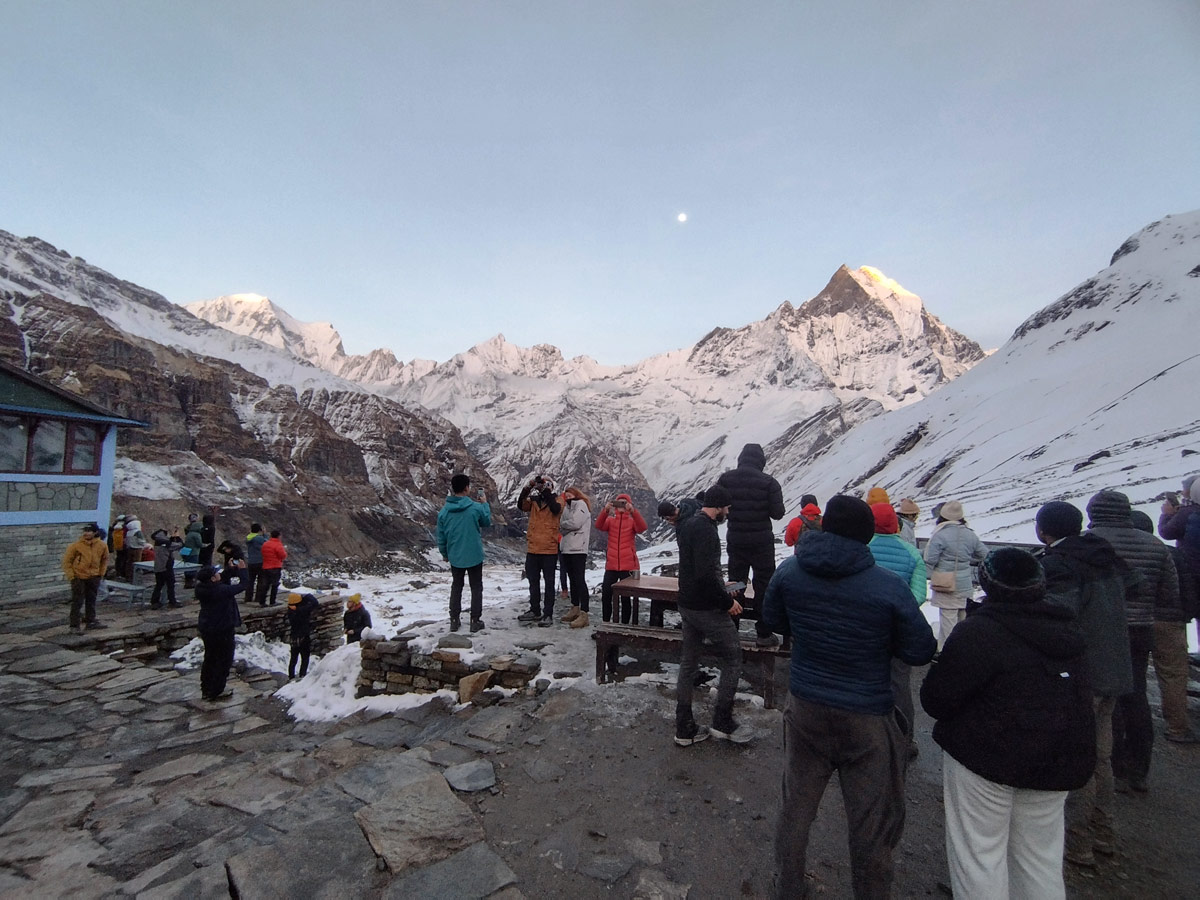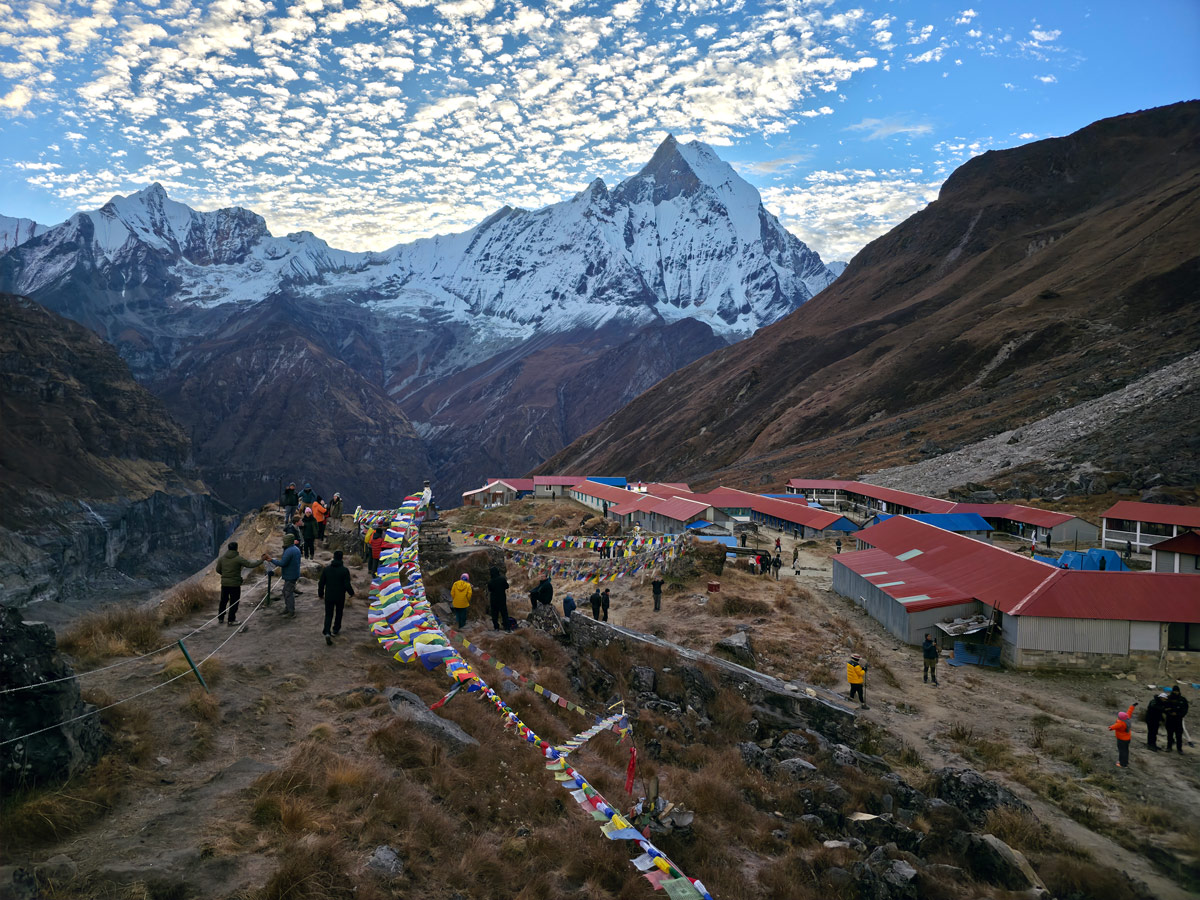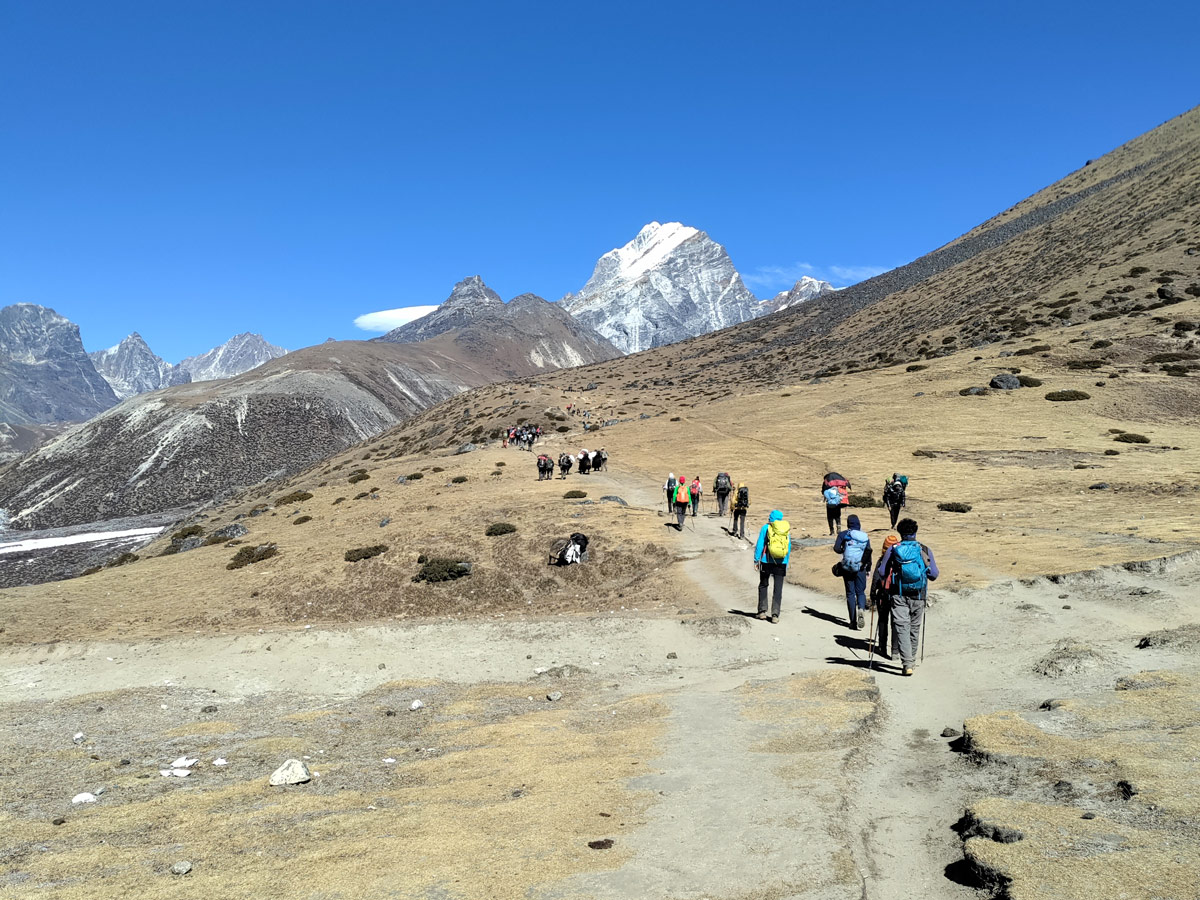In the adventurous world of trekking, few treks stand out as the most iconic and sought after. The Annapurna Base Camp Trek from the majestic land of trekkers- Nepal, is one such iconic trek.
This trek takes you to the base of the tenth highest peak in the world- Mt. Annapurna. And the cultural exposure that this trek gives you is beyond imaginable.
However, this exact allure of the Annapurna Base Camp trek makes the beginners wonder- ‘is this really the perfect trek for us?’. Well, here is the good news. It can be the perfect trek for you.
But don’t just take our word for it. As in this blog, we are going over every aspect of this trek and decoding the answer to your frequent question- ‘I Annapurna Base Camp trek suitable for beginners?’
Annapurna Base Camp Trek: Overview and Altitude
The Annapurna Base Camp trek is one of the most famous and iconic trekking trails across the world, and it is also a solid competition to the Everest Base Camp Trek.
This trek takes you to the base of the mighty Annapurna range at the heart of the stunning and visual amphitheater, i.e. the Annapurna Sanctuary at an altitude of 4,130 meters (13,550 feet).
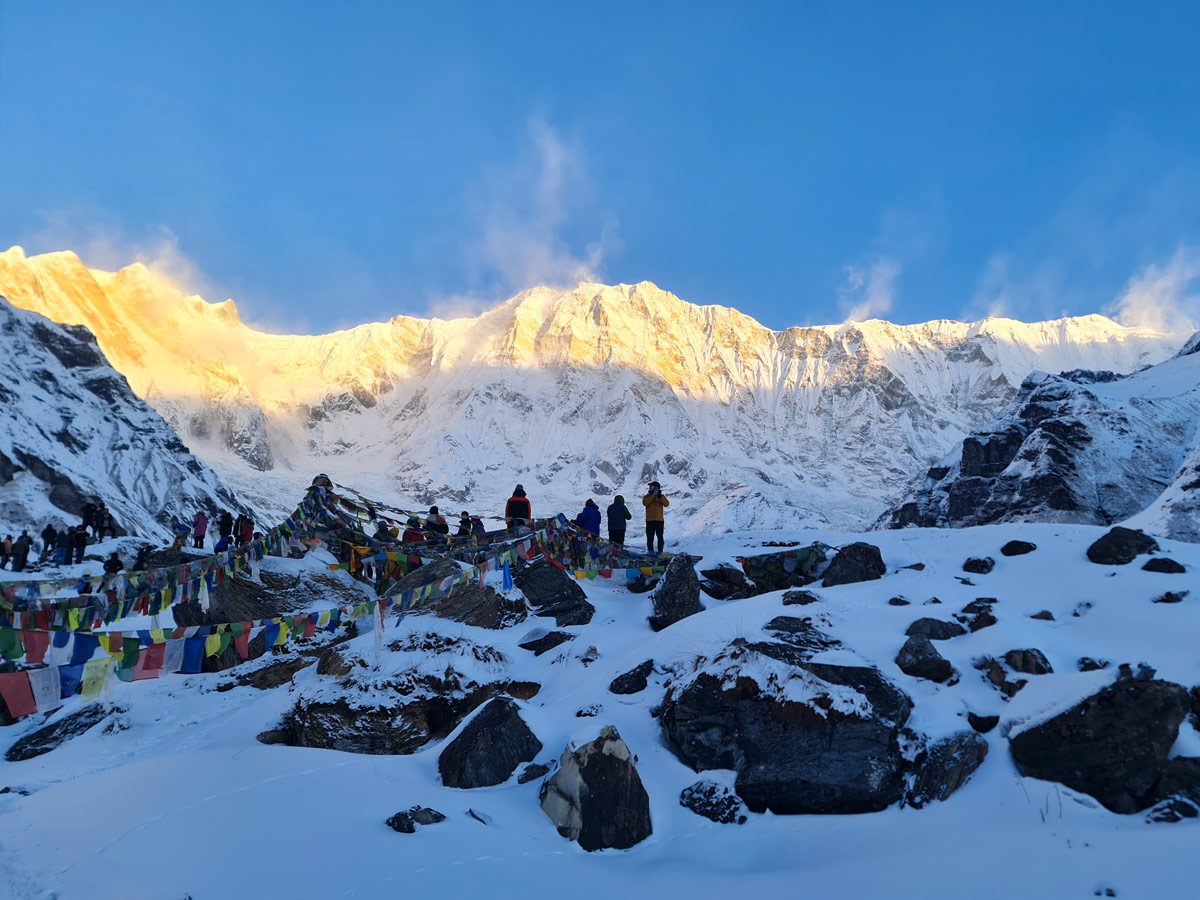
This trek lies in the Annapurna Conservation Area which is one of the major protected areas of Nepal. It begins from Pokhara, which is also known as the gateway to Annapurna region.
The ABC trek spans over a duration of 10 to 12 days varying based on your itinerary, chosen route, acclimatization days, and can be extended further by incorporating short trips around the Annapurna region.
Terrain, Trails, and Landscapes: A Visual Journey
Similar to the Everest Base Camp trek, the Annapurna Base Camp trek is also pretty much developed in terms of the trekking trail, and you will find that the trail is full of basic amenities.
Worry not beginners as the trails are well trodden with no technical sections and easily manageable terrain for most part. The main challenge that arises on the ABC trek are the stone stairs around Ulleri and Chhomrong that might test your endurance.
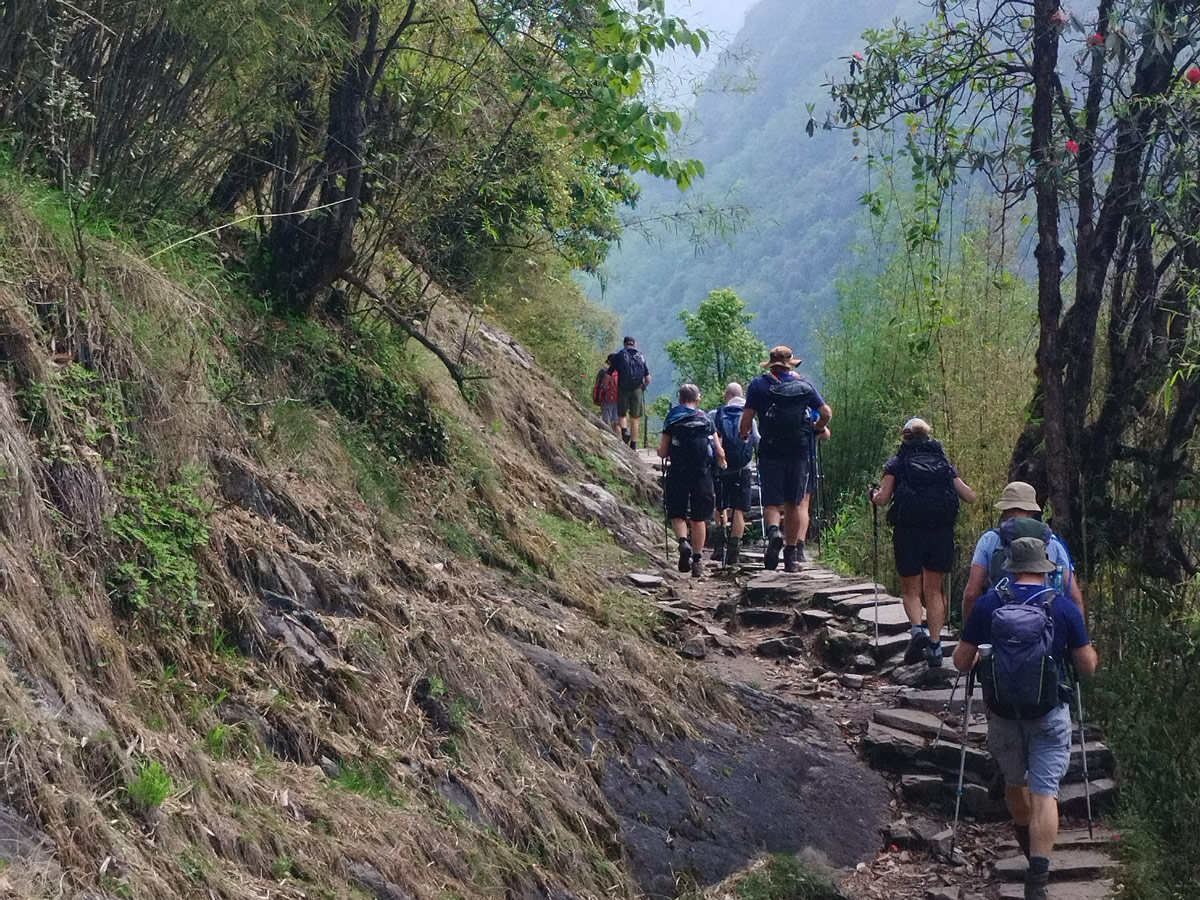
The trails are essentially a mix of dirt paths, occasional wooden or suspension bridges over gushing rivers, and well marked sections. The trail network is well established which will help you as a beginner.
As you start from Birethanti, the landscape transitions from lush, subtropical rhododendron forests and terraced paddy fields in the lower regions (e.g., Nayapul, Ghandruk) to bamboo and alpine shrubbery at mid-altitudes (e.g., Dovan, Deurali).
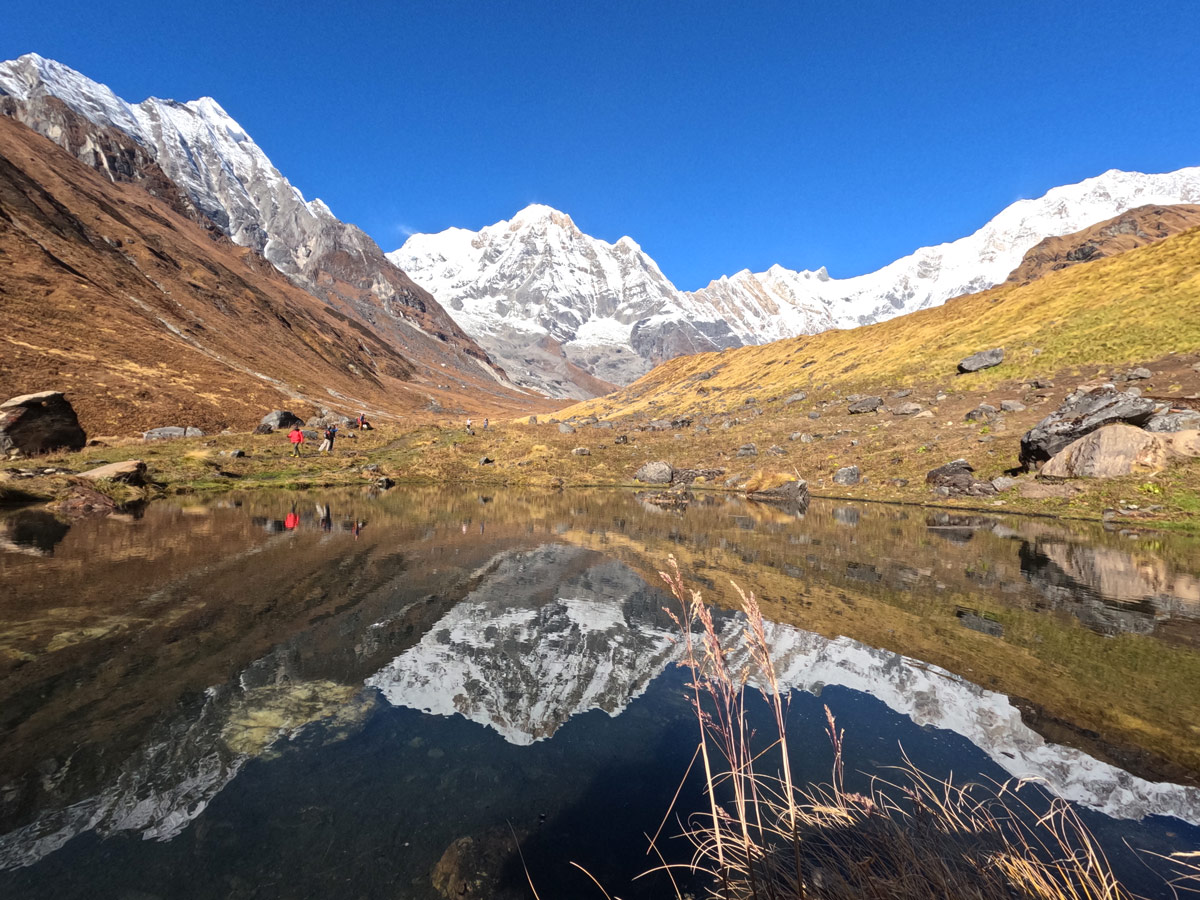
Finally at high altitude regions, this landscape transitions to the stark, majestic glacial moraines and rock formations as you approach Machhapuchhre Base Camp (MBC) and ABC.
The trail is not just limited to the natural beauty like cascading waterfalls or hot springs at Jhinu, but you will also come across cultural landmarks like the Chhomrong village and many monasteries.
A Guided Itinerary
The trekking trails of Nepal are regulated by the government. While solo trekking is not recommended, it is mandatory to obtain the necessary permits and hire a licensed trekking guide for most routes. This ensures your comfort as well as safety during the trek. Getting in touch with a local reputed trekking agency like Ace the Himalaya can help you get licensed guides as well as a guided itinerary for a safer and organized trekking experience.
Below is the guided trekking itinerary for beginners for the Annapurna Base Camp Trek:
- Day 01: Arrival at Tribhuvan International Airport in Kathmandu and transfer to hotel
You will be received at the TIA by one of our officials and then taken to your hotel in a private tourist vehicle where you will rest and then have a pre trek briefing by your guide.
- Day 02: Drive to Pokhara in a Tourist Bus
Our private vehicle will take you to Pokhara from Kathmandu in an early morning drive. This valley is often regarded as the Gateway to Annapurna region.
- Day 03: Drive to Birethanti and Trek to Ulleri
After exploring Pokhara, you will continue your drive to Birethanti and then your trek will officially begin as you move from Birethanti to Ulleri.
- Day 04: Trek to Ghorepani from Ulleri
Walk through lush rhododendron forests and Magar villages. The trail offers beautiful Himalayan glimpses as you ascend steadily to Ghorepani, a charming village with panoramic mountain views.
- Day 05: Early morning hike up to Poon Hill & back and then, Trek to Tadapani
Wake early to hike to Poon Hill for a spectacular sunrise view over the Annapurna and Dhaulagiri ranges. After breakfast in Ghorepani, descend through forests and ridgelines to Tadapani.
- Day 06: Trek to Sinuwa from Tadapani
Trek through dense forests and across suspension bridges, descending and ascending again to reach Chhomrong—a major Gurung village with stunning views of Machhapuchhre. After that, you will rest at Sinuwa.
- Day 07: Trek to Deurali from Sinuwa
Continue uphill through damp, forested areas and pass by Hinku Cave. The trail becomes steeper and more alpine as you approach Deurali.
- Day 08: Trek to Annapurna Base Camp from Deurali
A relatively short but breathtaking trek to the base of Annapurna I. Surrounded by a 360-degree panorama of snow-capped peaks, this is the highlight of your journey.
- Day 09: Trek to Bamboo from Annapurna Base Camp
The trail descends steeply to the river and then ascends through bamboo and rhododendron forests to reach the peaceful village of Bamboo.
- Day 10: Trek to Jhinu from Bamboo
Continue descending to Jhinu Danda, famous for its natural hot springs. Relax and soak your tired muscles in the riverside pools.
- Day 11: Trek to Syauli Bazaar and Drive to Pokhara
A short hike brings you to Syauli Bazar, where a vehicle will be waiting to take you back to Pokhara, marking the end of your trek.
- Day 12: Drive Back to Kathmandu in a Tourist Bus
You will continue your drive after a brief halt at Pokhara and make your way back to the capital.
- Day 13: Transfer to the International Airport for your final departure
Time to bid a happy farewell to the country and go back home!
Understanding Trekking Days and Daily Routine
While the Annapurna Base Camp Trek spans around 12 days, each day is about maintaining a steady rhythm. Neither can you go overboard and cover huge altitude difference in one day, nor can you be too slow.
Each day on the ABC trek features around 5 to 7 hours of trekking. Now, on initial days this could be less than that and, on the day when you head towards the ABC, it might even be slightly more than 7 hours.
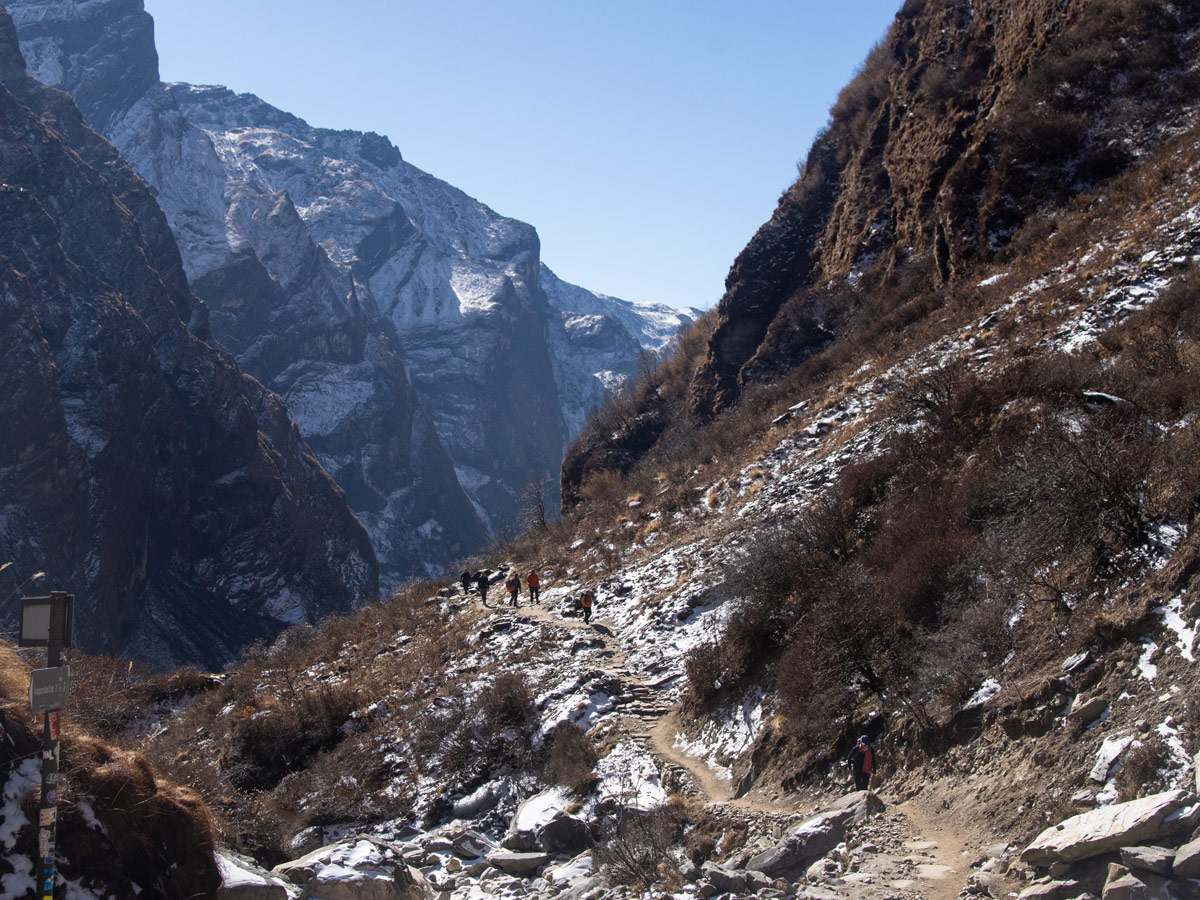
At the end of the day, your trekking hours completely depend on your itinerary and your pace. The main thing to keep in mind is to be slow and steady which is the mantra for all high-altitude treks.
Daily walking distances on Annapurna Base Camp Trek vary but generally range from 10 to 15 kms. It is important to understand that distance on paper doesn’t always reflect difficulty due to altitude gain/loss and rugged terrain. A shorter distance on an uphill day can be more challenging than a longer flat section.
Physical Preparation for Annapurna Base Camp Trek
The Annapurna Base Camp trek is one of the beginner friendly trekking trails in Nepal. Having said that, you can’t just expect to conquer this trek without any prior preparation.
While you don’t need to be an elite athlete with a great deal of physical fitness, reasonable physical fitness and endurance are non-negotiable. Prior trekking experience, while appreciated, is not mandatory for the ABC trek.
Unlike the Annapurna Circuit Trek, you do not have to cross any high mountain passes, making this journey more accessible to first-time trekkers.
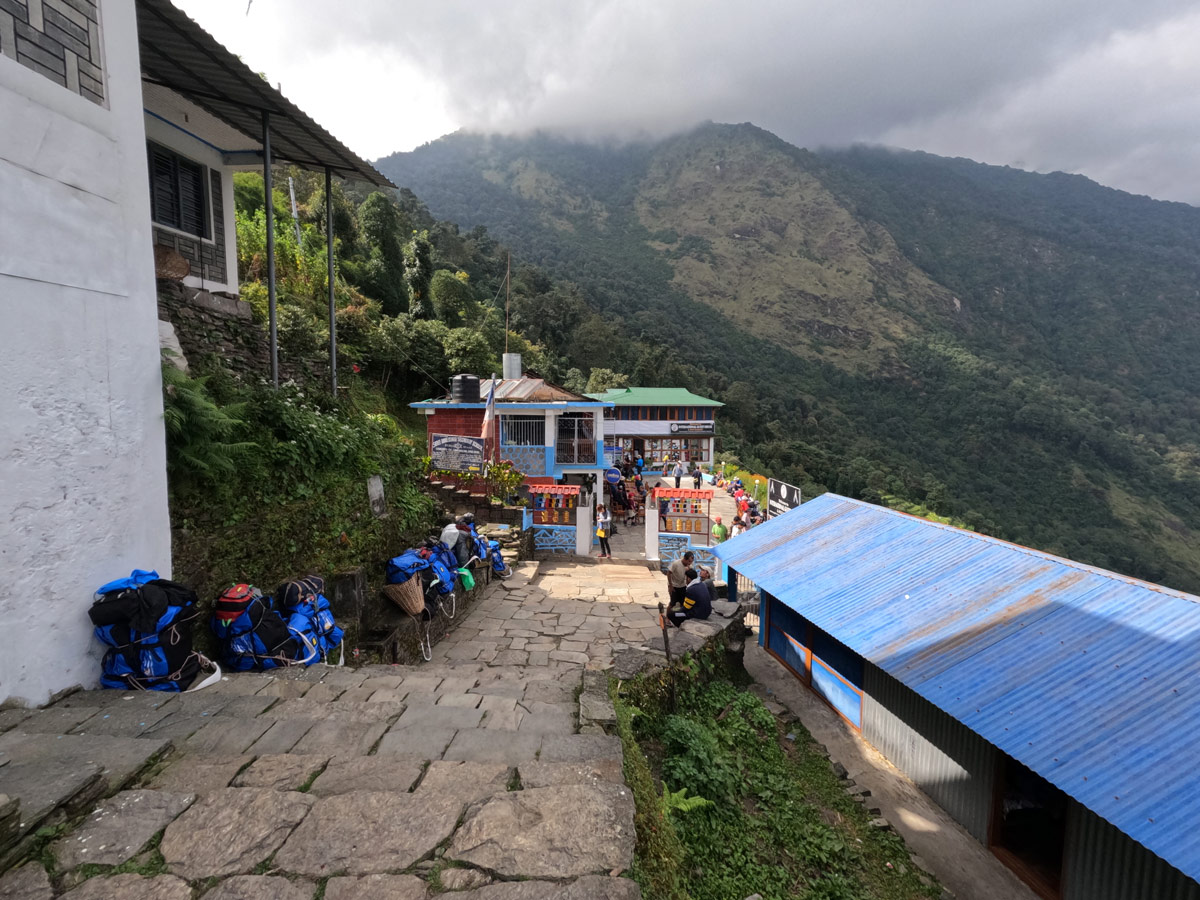
You should start preparing for ABC trek at least 3 months in advance. A general overview of this preparation includes strength training, weight lifting, and cardio exercises.
The main focus during these workouts should be on your back, shoulder, core, and calves as you will need maximum strength and agility while climbing and getting down the stairs.
You can indulge in basic exercises like swimming, dancing, cycling, or you can also go on short treks while carrying weight on your back so that you can simulate trekking conditions. Climbing up and down stairs is also a great exercise.
Gradual Acclimatization
One of the biggest challenges while trekking in Nepal remains the altitude. Especially in a trek like Annapurna Base Camp which takes you well above the 4,000-meter mark, altitude can pose significant challenges.
You can easily fall victim to acute mountain sickness which includes symptoms like nausea, vomiting, loss of appetite and sleep, and serious symptoms like High Altitude Pulmonary Edema and High-Altitude Cerebral Edema which can be life threatening.
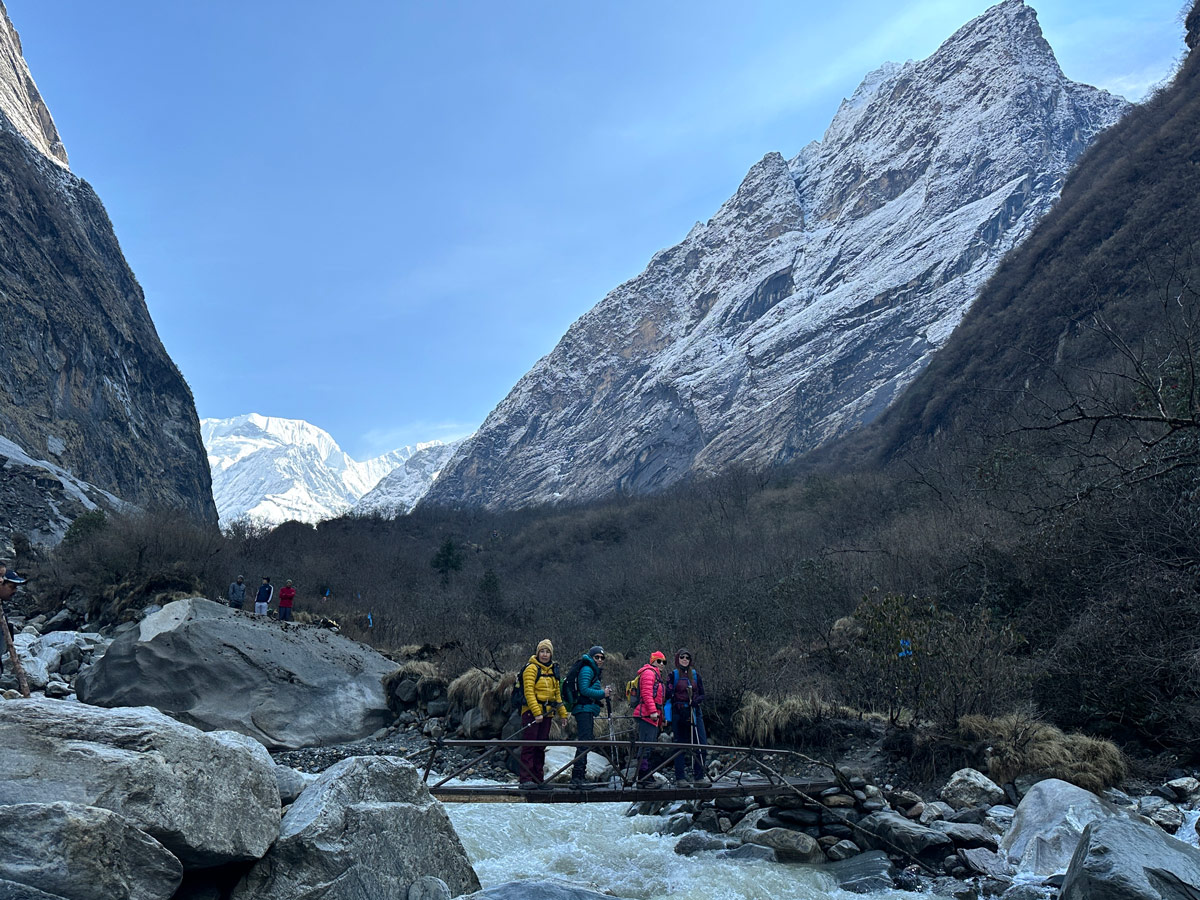
Preventing altitude sickness should be your priority during the trek and it can be done through proper acclimatization. Through acclimatization, you allow your body to slowly adapt to the extreme conditions.
While the ABC trek already features steady altitude progression, it is still best to include at least one acclimatization day in your itinerary. Besides that, you can follow the ‘climb high, sleep low’ principle to allow your body to adapt.
Food and Hydration: Fueling Your Trek
You need a lot of fuel and energy for your high-altitude adventure, and you get this by consuming a healthy and well-balanced diet and staying hydrated throughout the trek.
The Annapurna region is famous for being a melting pot of cultures. And with many cultures comes a wide variety of cuisines in the region that you can relish in.
You can enjoy the delicious Thakali meal or the Gurung staples or even basic Nepali staple like Dal Bhat (rice, lentils, and vegetables) can be a great meal option to keep you full and energetic throughout the trek.
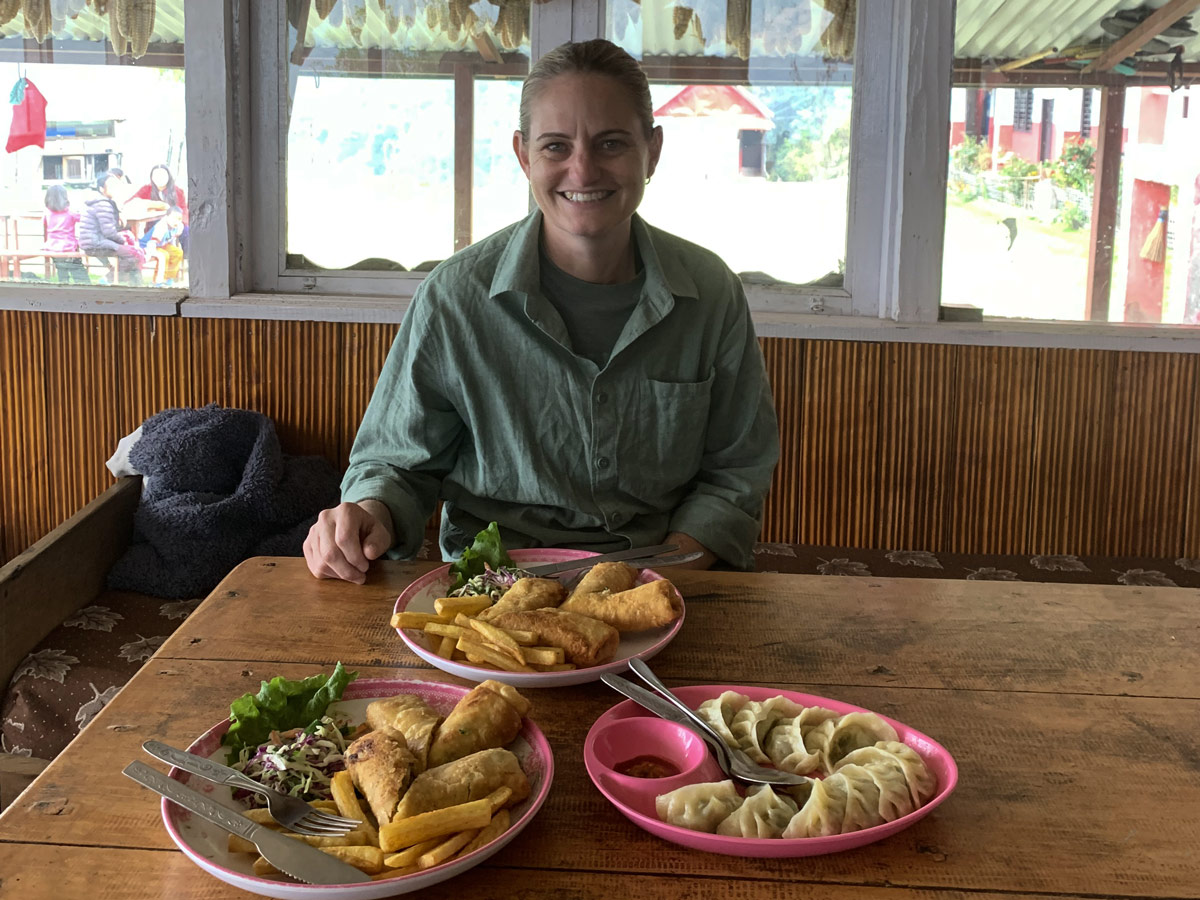
If you get bored of these options, which you definitely won’t, many teahouses along the ABC trail also feature international food menu and include items like pancakes, pasta, omelets, and more.
It is advised to stick to vegetarian items during the trek as nonveg might cause issues like food poisoning as not all meat in the region might be fresh. Carry nuts for extra energy in between the trek.
Drink at least 3 to 4 liters of water every day and avoid caffeine and alcohol as it can significantly dehydrate you. Being hydrated is also one of the keys to keeping altitude sickness at bay.
Mental Preparation
While physical preparation can help you make your way through the Annapurna Base Camp trek, you won’t really be able to make the best of it without proper mental preparation.
Many trekkers overlook mental fortitude while preparing for the trek, and this is exactly what leaves them confused and frustrated halfway into the trek as they are hit by something they never saw coming.
The physical challenges of the trek including the pain, soreness, fatigue, and tiredness can get to you on a mental level as well. You will be alone during the trek and not surrounded by any family or friends, except of course your fellow trekkers.
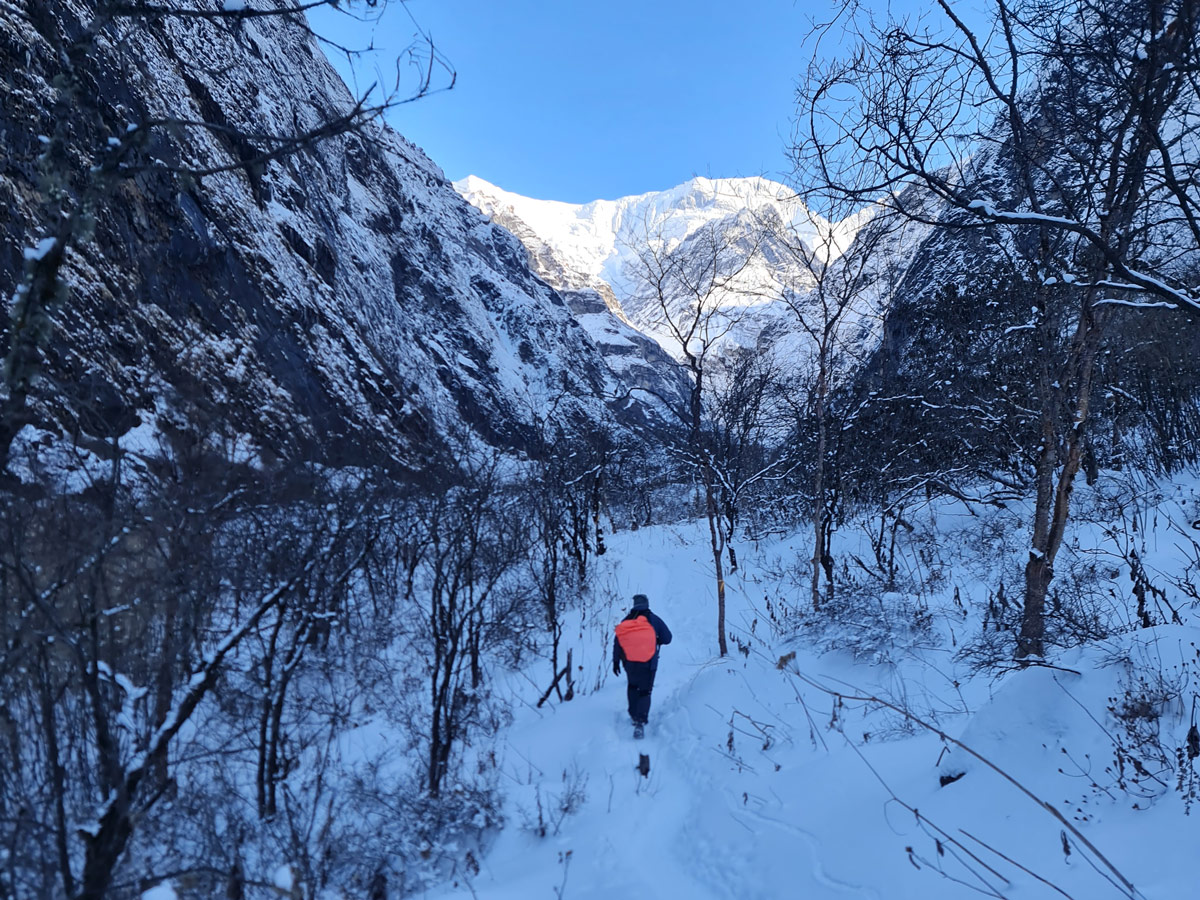
In that challenging phase, you will have only yourself to give you the mental resilience required to deal with the challenging and extreme circumstances and tell yourself that you can make it out of this.
You need to work on breathing techniques like pranayama, and meditation while preparing for the ABC trek. During the trek, if you feel low, you can try to visualize yourself conquering the trek.
Along with this, you can also write down your feelings and let them out. It is best to make friends with fellow trekkers as they are the only ones in the same boat as you!
So, Is ABC Trek Suitable for Beginners?
Now that we are at the end of this blog, I think we have established without any doubt that the Annapurna Base Camp trek is indeed suitable for beginners, given that they have proper preparations and support from a licensed guide.
Its combination of natural beauty, cultural exposure, and moderate difficulty makes it ideal for those looking to take their first step into the world of trekking. If you’re dreaming of standing beneath Annapurna I and witnessing towering peaks all around, this trek is your chance.
